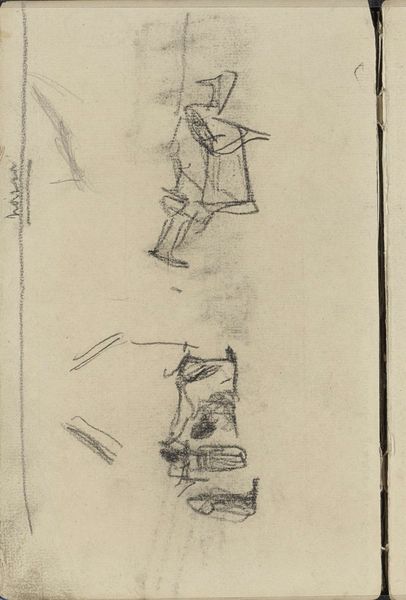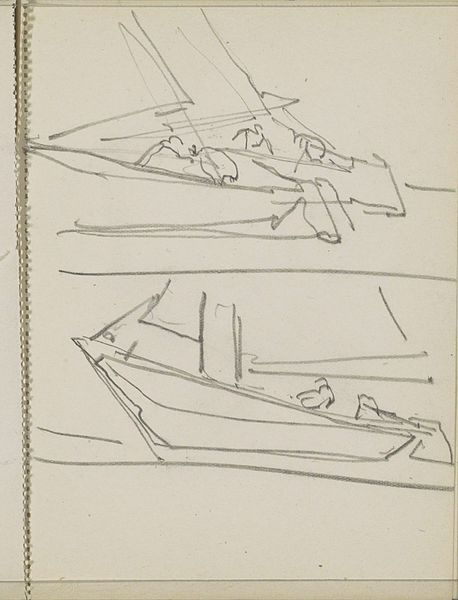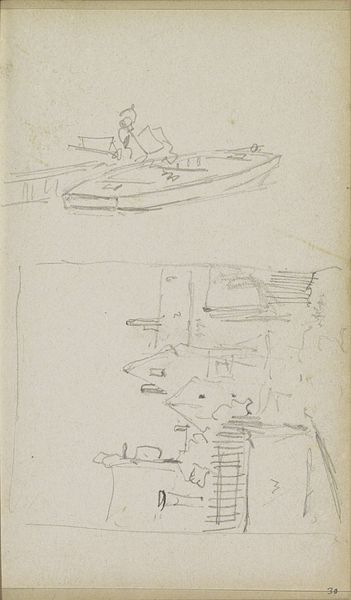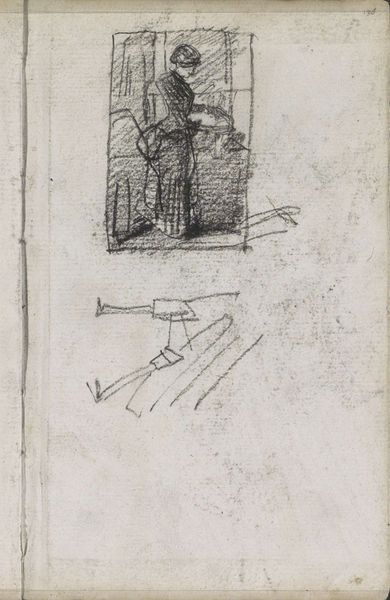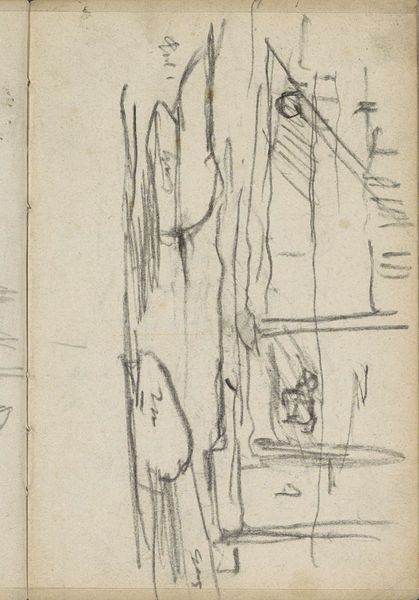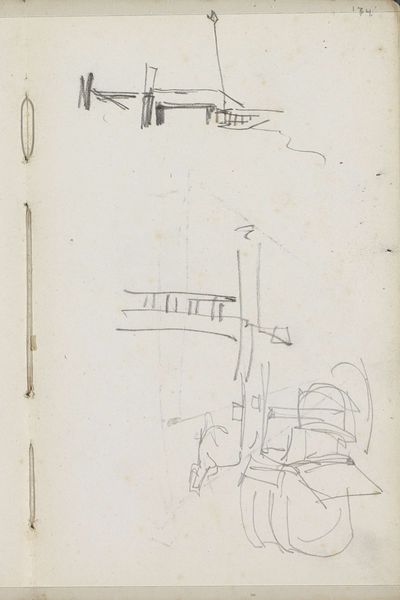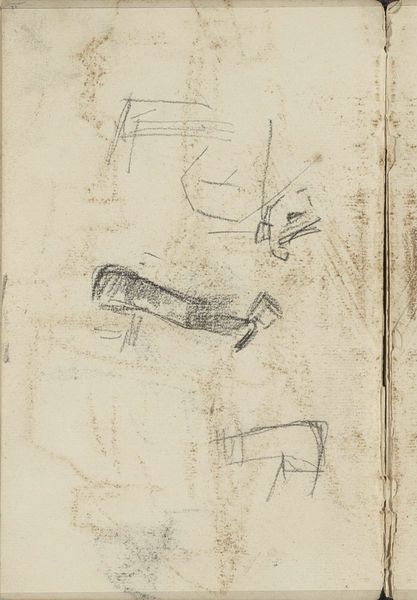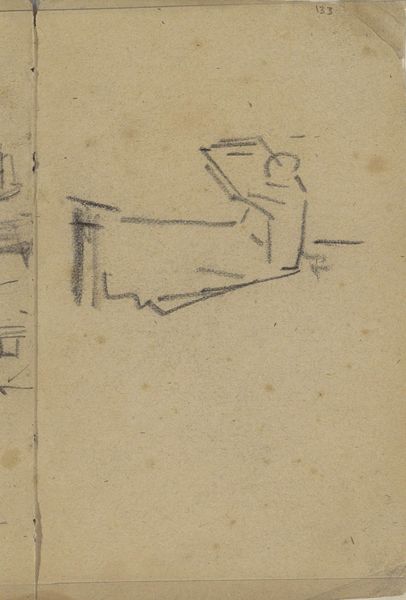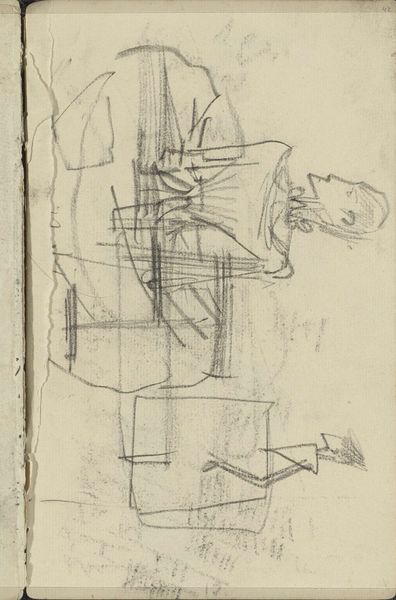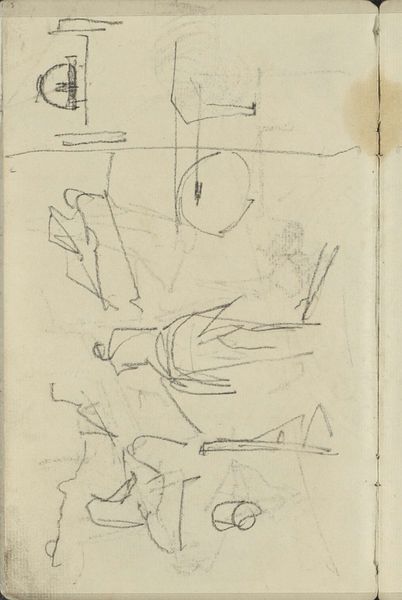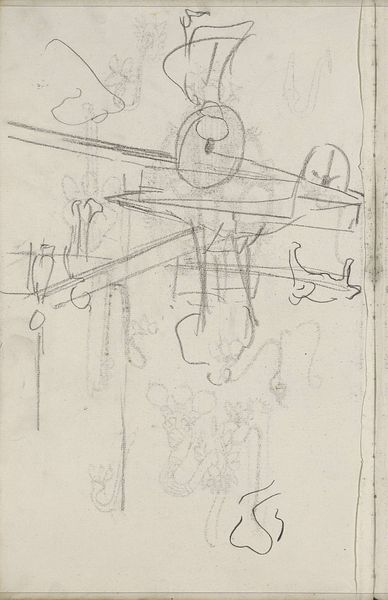
drawing, paper, graphite
#
drawing
#
amateur sketch
#
impressionism
#
sketch book
#
hand drawn type
#
paper
#
personal sketchbook
#
idea generation sketch
#
sketchwork
#
pen-ink sketch
#
abstraction
#
line
#
graphite
#
sketchbook drawing
#
sketchbook art
#
initial sketch
Copyright: Rijks Museum: Open Domain
Editor: This is "Studieblad" – Study Sheet – by George Hendrik Breitner, made around 1881 to 1883. It’s a drawing on paper, mostly graphite and maybe some pen and ink. I’m struck by how informal it is, like peeking into the artist's mind at a moment of exploration. What do you make of it? Curator: Well, seen through a historical lens, Breitner’s "Studieblad" provides a fascinating glimpse into the artistic process in late 19th-century Holland. Consider the rise of Impressionism. Breitner, while associated with the Amsterdam Impressionists, shows here the groundwork. This isn’t a polished piece for public consumption, but a private space where he works through ideas. What do you think that reveals about the changing role of the artist and the artwork itself during this time? Editor: It feels more intimate, less about pleasing a patron, and more about the artist’s individual search for understanding or expression. Was this kind of informal sketching common, or was Breitner particularly unique in documenting his process so openly, even if only in a private sketchbook? Curator: Sketchbooks, as we know, weren't novel. But increased literacy rates and, more broadly, an increasingly democratized consumption of visual culture reshaped art's accessibility, which, in turn, influenced artistic practices and patronage. The question is less about *if* sketches existed but *how* the cultural role of art and the artist’s 'genius' intersected. Editor: That's insightful! It's like seeing a before-and-after: the democratization influencing art and artists documenting, or perhaps even cultivating, that shift. Curator: Precisely. Editor: I hadn’t considered it in that light. It’s interesting to see the seeds of major art movements in such a personal format. Thanks for helping me contextualize it.
Comments
No comments
Be the first to comment and join the conversation on the ultimate creative platform.
